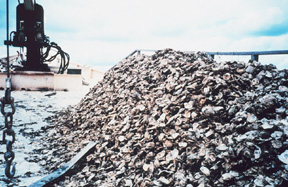
With 30 chromosomes rather than 20, triploid oysters have underdeveloped reproductive systems, and are not likely to spawn. Triploid oysters have 30 chromosomes, and are a hybridization of 20 and 40 chromosome individuals. Triploid, or spawnless oysters, further enhance growth. Disease resistant oysters are selectively bred for their ability to survive despite disease pressure, and grow more quickly than wild oysters. With the aquaculture industry rapidly increasing in the Chesapeake Bay, there has been interest in varieties of oysters that grow more quickly and exhibit resistance to common diseases. The Eastern Oyster, Crassostrea virginica, is native to the Chesapeake Bay and can be found from Maine to Texas.Ĭheck out the World Register of Marine Species to explore historical and currently observed species of oysters. Because classification of oyster species based on appearance can be so confusing, scientists have recently been using genetic approaches to identify differing species. This characteristic makes it difficult to determine how species of oyster there are worldwide, and estimations are anywhere from 30 to over 100. Oysters have high phenotypic plasticity, which means that the same species may look extremely different when exposed to differing environmental conditions. To learn more about taxonomic classification system and the terms phylum, class and order, click here. Edible oysters belong to the order Ostreidae and are typically thought of as ‘true oysters’ while additional, non-edible species, referred to as ‘pearl oysters’ or ‘thorny oysters’ belong to different orders.


A defining characteristic of bivalves is two shells hinged together with ligaments. Within Mollusca, they reside in the class bilvalvia, which also contains clams and mussels. Oysters belong to the phylum Mollusca, which contains many other well-known invertebrates, such as snails, squid, and octopi. The Greeks envisioned their goddess of love, Aphrodite, springing forth from the sea on an oyster shell and giving birth to Eros, from which the word “aphrodisiac” was born. Did you know oysters have been around for 200 million years? Which means we are constantly discovering cool new things about them! Read these oyster facts for more info on our favorite bivalve and why they are necessary for the Chesapeake Bay’s ecosystem.įirst attested in English during the 14th century, the word “oyster” comes from Old French oistre, in turn from Latin ostrea, the feminine form of ostreum, which is the latinisation of the Greek ὄστρεον ( ostreon), “oyster”.


 0 kommentar(er)
0 kommentar(er)
